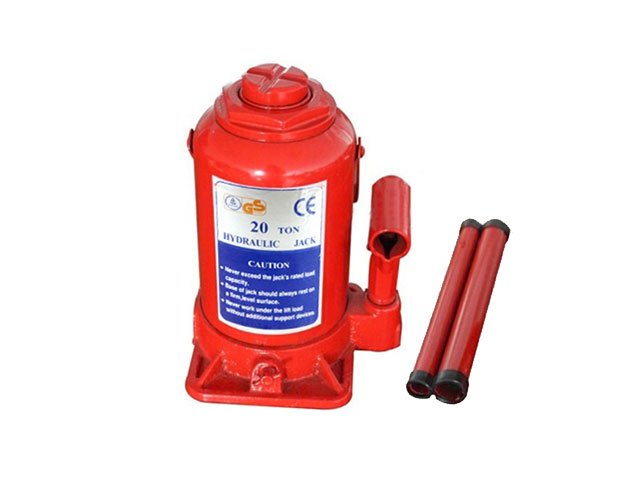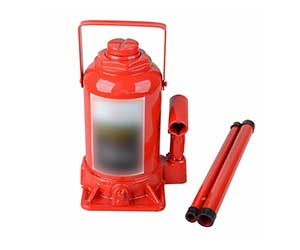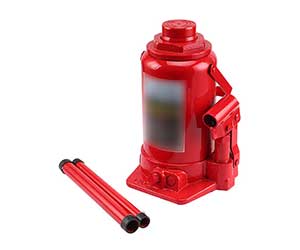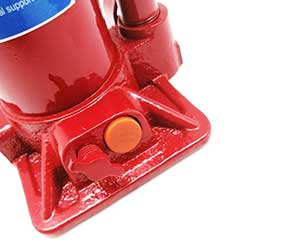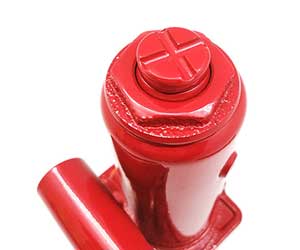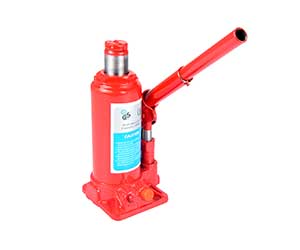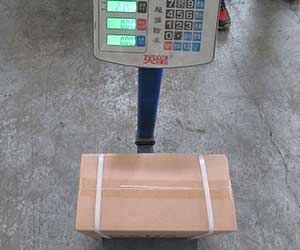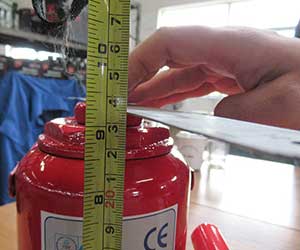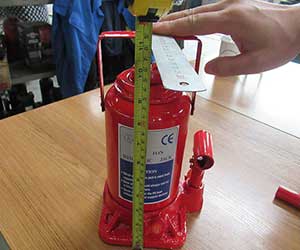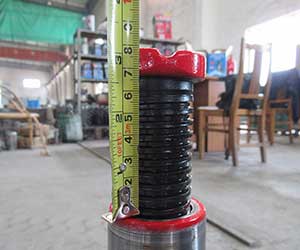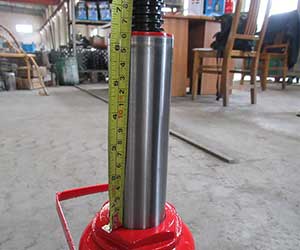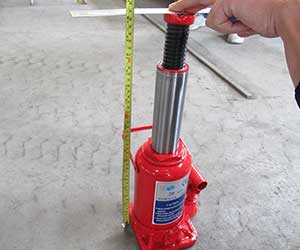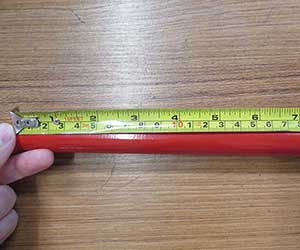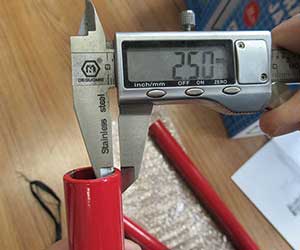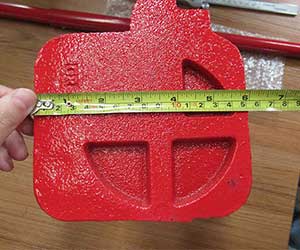Hydraulic bottle jack
Specification:
Color: Red
Lifting Capacity: 20 tons
Type: Bottle Jack
Power Source: Hydraulic
Product height: 235MM
Rising height: 145MM
Adjustable height: 60MM
Highest size of product use: 440MM
Features:
-Easy to use and durable
-Heavy-duty metal construction
-Steel construction with inner and outer welded structure keeps the bottle jack leak free and builds it stronger.
-The base is vast and rugged, which gives stability and strength.
-It is suitable for many cars when repairing.
-Easy to operate and quick to lift cars.
-Non-slip head: Increased friction and reduced the risk of vesicle slipping
-Big and small pressure rods: for easy storage
-Piston rod: using the polishing processing, beautiful and corrosion resistance.
-Adjust screw: Not easy to rust, flexible adjustable height, excellent forging processing, high strength, not easy corrosion, solid compressive strength.
-Compressive bar: thick sections connected handlebar, convenient storage and use.
-The oil plug: rubber oil plug, seal degree is high, used for filling and discharging air.
-Pull wear-resistant cylinder: increase the service life.
Pay attention when using:
1. Beware of oil pollution.
2. Do not overload.
What is a hydraulic bottle jack?
The jack can lift objects such as automobiles and build fun using a hydraulic ram or bottle donations. It is compact and can lift objects safely and efficiently.
Hydraulic pressure lifts the object, allowing greater precision and control than manual jacks or other lifting devices. Hydraulic bottle jacks are essential for many industries with their ability to lift up to 20 tons.
Can a bottle jack lift a car?
They can also be relatively inexpensive, so one could be left in a vehicle as a mildly safer alternative to a scissor jack. The bottle jack is surprisingly easy to use as well. A car can rise quickly by positioning it under a jack point and slotting the pump handle into place.
A smooth, efficient, and safe operation depends on selecting the right tools for every job in every industry. For automotive repairs, professional and amateur mechanics often struggle to decide whether to use a floor or bottle jack. In one case, stability, ease of use, and speed provide, while power and compactness provide in the other.
Floor jacks
Floor jacks orient with the hydraulic cylinder positioned horizontally. One of the most apparent advantages of floor jacks is their portability; unlike bottle jacks, most have casters that allow for easy rolling back and forth, so jacks can reposition on the fly. Unfortunately, they are also somewhat bulky and unwieldy, which can be a drawback when space is at a premium.
Another advantage of floor jacks is that they sit low to the ground. It means they can easily roll under vehicles that also sit low. There are even specialized low-clearance jacks available for extremely low cars. And because floor jacks design with a long pump handle that allows for rapid lifting and lowering of cars, speedy operations are possible. The long handle also makes for easier use, an advantage for workers concerned about being able to operate jacks quickly in a pinch.
While providing the same power as a bottle jack, floor jacks take up much floor space. They usually require quite a bit more maneuvering to set up so the handle can be appropriate. They also need more storage space. And because of their horizontal design, floor jacks can hoist much less weight than bottle jacks.
Bottle jacks
On the other hand, bottle jacks mount vertically, and the more straightforward design allows them to lift more weight to higher elevations. These jacks are also smaller, more easily stored than floor jacks, and significantly cheaper.
Truck owners, in particular, might find bottle jacks an ideal solution, as clearance is generally not an issue and accessible storage is possible in a cab compartment. This portability also makes bottle jacks especially useful in emergencies, as they can easily carry to the scene.
Although a bottle-shaped hydraulic vehicle jack is more stable than a floor jack because of its narrow frame, floor jacks provide a more durable solution for tricky operations. In addition to having a minimum lift height, bottle jacks may need to fix for vehicles with standard clearance.
Bottle and floor jacks offer distinct features and advantages; each type is well-suited to various automotive applications. These two types of jacks can use in combination with one another.
How to choose the correct jack?
Capacity for weight
There are different capacities of bottle jacks for lifting different amounts of weight. Choosing the proper jack will depend on the vehicle you’re working on. Typically, a two-ton jack can lift most automobiles and small SUVs, whereas a three-ton jack will lift most trucks and full-size SUVs.
Lifting range
As for the bottle jack, lift height won’t be helpful if it can’t steal your vehicle off the ground. You’ll need to look at the number of steps on the piston of the bottle jack to compare the strokes and maximum height of the bottle jack, regardless of whether you need it for tire changes or repairs.
Material and quality
It is also essential to consider the material used in the construction of the bottle jack. It is necessary to use durable and sturdy steel for the body and the base of the bottle jack to withstand the pressure of lifting and holding heavy loads for an extended period, especially when using high-lift bottle jacks. High-quality bottle jacks make from drop-forged iron and alloy steel. Welds must be of high quality to provide the best strength and performance.
Hydraulic or pneumatic
Pneumatic systems are faster, but hydraulic systems can lift heavier loads.
Easy-to-use
Ensure the bottle jack has a long pumping handle so pumping is comfortable and easy.
To learn more about the bottle jacks, contact Tiroflx.

